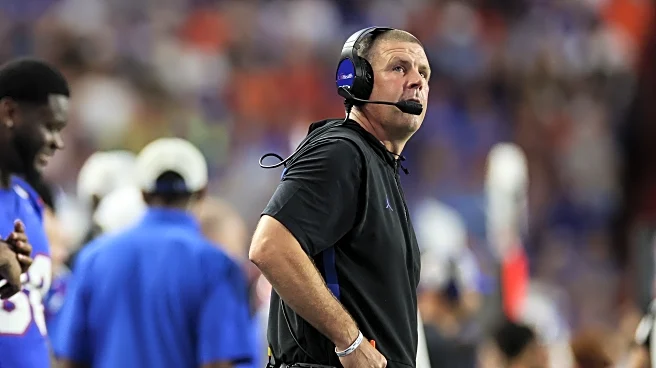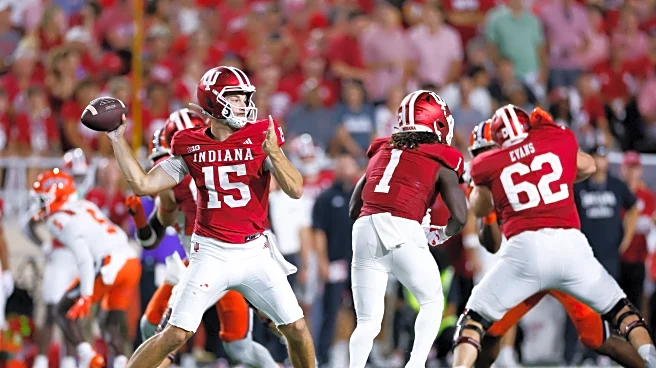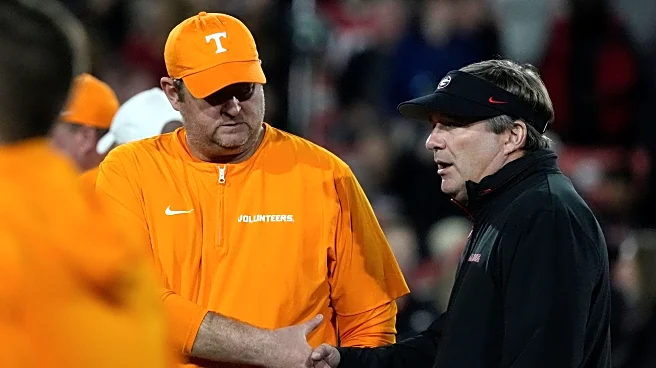What's Happening?
The Southeastern Conference (SEC) has announced its football schedules for the 2026-2029 seasons, including the repeat rivalry opponents for each team. The new nine-game schedule format will feature three annual opponents, six rotating opponents, and an annual game against Notre Dame or another power conference team. Teams will play each league opponent every two years and visit every venue in the league over the four-year span. The scheduling decisions were based on teams' combined league records from the last four years, with Oklahoma and Texas carrying over records from the Big 12.
Why It's Important?
The announcement of the SEC's new schedule format is significant as it impacts team strategies and preparations for upcoming seasons. The inclusion of repeat rivalry opponents ensures continuity and maintains traditional matchups that are popular among fans. This format aims to balance competition and provide teams with diverse challenges. The decision to include games against Notre Dame or other power conference teams enhances the league's prestige and competitiveness. The scheduling changes may influence recruitment strategies and team dynamics, as teams prepare for varied opponents.
What's Next?
SEC teams will begin strategizing for the upcoming seasons, focusing on preparing for their repeat rivalry opponents and rotating matchups. The introduction of games against Notre Dame or other power conference teams will require teams to adapt their strategies and enhance their competitiveness. Fans and stakeholders will be anticipating the new matchups and the potential for exciting games. Teams will likely analyze their past performances to identify areas for improvement and capitalize on opportunities presented by the new schedule format.
Beyond the Headlines
The SEC's scheduling changes may have broader implications for college football, influencing other conferences to consider similar formats. The focus on maintaining traditional rivalries while introducing new matchups reflects a balance between preserving history and embracing innovation. This approach could impact the league's reputation and marketability, attracting more media attention and fan engagement. The changes may also affect the dynamics of college football, as teams adjust to new competitive landscapes and opportunities.












